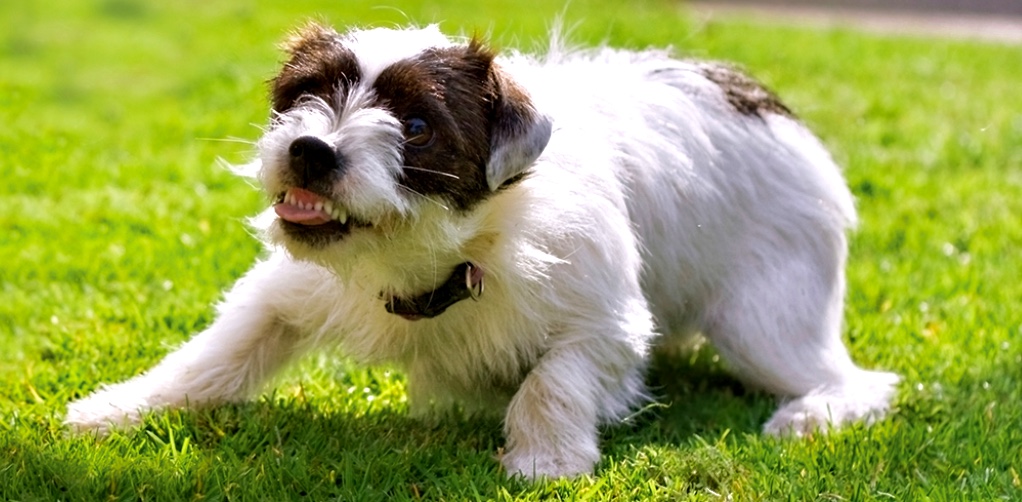Recent studies have concluded that the single most valuable thing to a dog is his/her human. The dog's motivation for praise is as valuable or more valuable than food.
Valerie is an expert in aggression and anxiety modification for dogs of any size, breed, or age
Her proven system is efficient and simple.
Aggressive Dog Training is a specialized area that very few trainers excel in. As the only trainer in the Coachella Valley specializing in aggressive dog training, Best Paw Forward is often the last resort for frustrated dog owners. When other Dog Behaviorists give up, Valerie is just getting started.

Has your dog ever bitten a person or other pet? This can be a scary situation for many people, and to the dogs! There are many reasons dogs may bite – including feeling threatened, being in pain or if they were startled. Whether your dog is biting, attacking or seemingly out of control— don’t give up. We’ve been saving aggressive dogs with the most unimaginable backgrounds for over 34 years, and we can rehabilitate your dog too.
Using a system for simple commands that actually works, we will teach you to improve the bond between you and your dog. Together, we will resolve problem behaviors, so you and your dog can have the happy, healthy relationship you’ve always dreamed of.
You can start immediately! Fearful and aggression training is perfect for dogs of all ages.
Recent studies have concluded that the single most valuable thing to a dog is his/her human. The dog's motivation for praise is as valuable or more valuable than food.
Aggressive dogs present some of the most complex problems because there are so many types and each requires a different approach. As a professional animal behaviorist, Valerie will determine the type(s) of aggression you may be dealing with and will then put together a custom plan based on that profile.
When adrenalin kicks in as a result of fear it’s called the flight response. For most dogs escape is not an option so the flight response becomes a fight response. Fearful dogs live with stress and anxiety and can be the most dangerous of all.
Social animals live by certain rules in order to minimize conflict between group members. This includes adopting a hierarchical order that determines who gets first crack at food, the best resting spots and opportunities to mate. Instead of having to fight for access to valued items or privileges each time, those lower down on the totem pole know to wait until the higher-ups have had their share first.
This is one of the more common types of aggression. These dogs have “top dog syndrome,” striving to be in charge of everything including other dogs and in many cases humans as well. In some pet dog packs, there is a clear rank order, while in other packs, the order of the dogs depends on the resource. One dog may be the boss when it comes to food, and another when it comes to toys.
Dogs natural tendency is to protect their family members if they feel that they are in any type of danger. Sometimes dogs reserve protective aggression for dogs or people they consider to be vulnerable, for example a puppy or sick family member.
Also referred to as resource guarding or food aggression is a partly instinctual drive that is exacerbated by fear, dominance or poor manners. A possessive dog is easy to identify because he is only aggressive when he has a prized possession. Some will hide cherished items and guard them from unsuspecting people who have no idea that they’re anywhere near the valued object.
Dogs distant relatives are territorial and some dogs display the same tendencies. They bark and charge at people who enter their home turf. Some will attack and bite an intruder, whether that person is friend or foe. Territorial aggression usually occurs along the boundaries patrolled by a dog.
Defensive aggression is closely related to fear aggression. While motivated by fear these dogs instead of retreating, decide that the best defense is a good offense. They may charge at a person or another dog who frightens them, barking and growling.
A holdover from their ancestors, dog show some classic predatory behaviors, including chasing and grabbing fast-moving things. Many dogs love to chase runners, bicycles and inline skates, and cars. They might also chase pets, wildlife and livestock, sometimes biting and even killing their target. Predatory aggression is very different from other types of aggression because there’s rarely any warning before an attack. A predatory dog doesn’t growl or show teeth first to warn the victim, it is triggered by movement.
Dogs can be like children lashing out with aggression when they get frustrated. A dog who’s excited by something but is held back can become aggressive. A frustrated dog might turn around and bite at the leash or the hand holding the leash. This is why some friendly dogs become aggressive when put behind a gate, in a crate, in a car, or on a leash.
Pain can make an otherwise friendly dog act aggressively. That’s why it’s so important to take precautions when handling an injured dog, even your own. A dog with a painful orthopedic condition or an infection might bite with little warning.

Bermuda Dunes, Cathedral City, Coachella, Indio, Desert Hot Springs, La Quinta, Palm DesertPalm Springs, Rancho Mirage, Sky Valley, Thermal & Yucca Valley